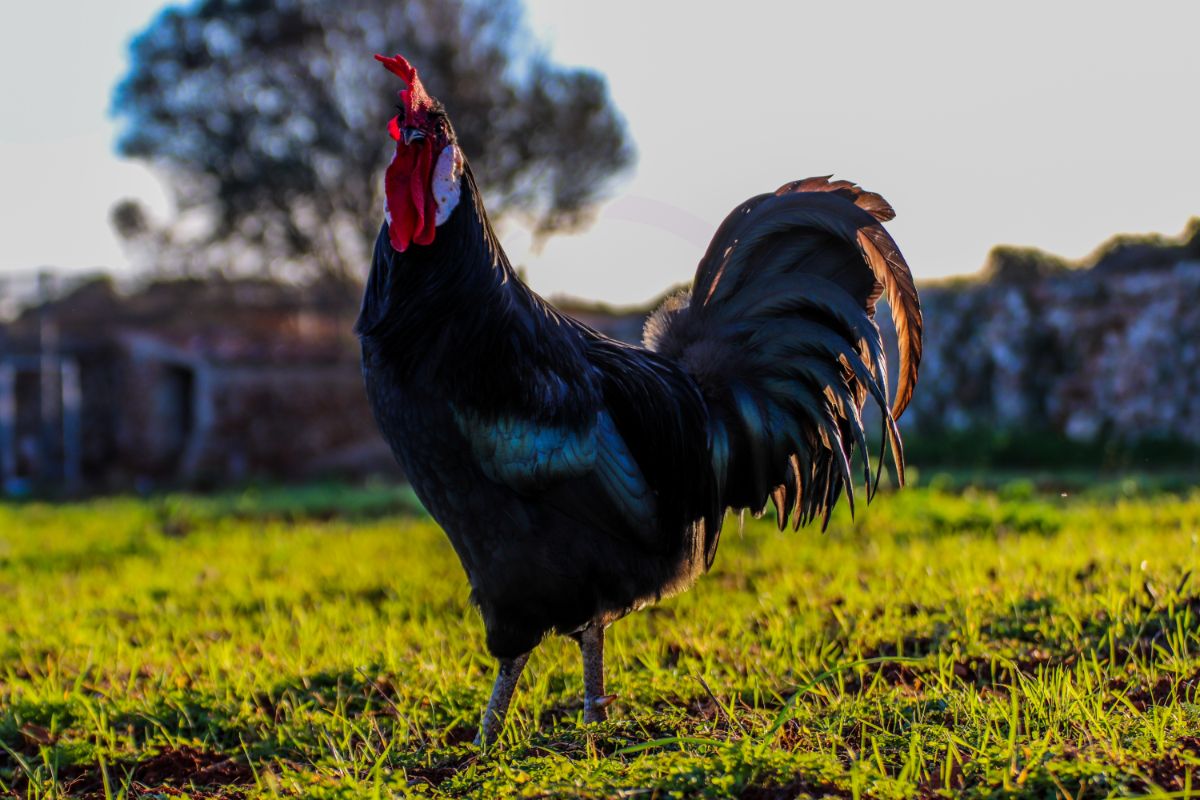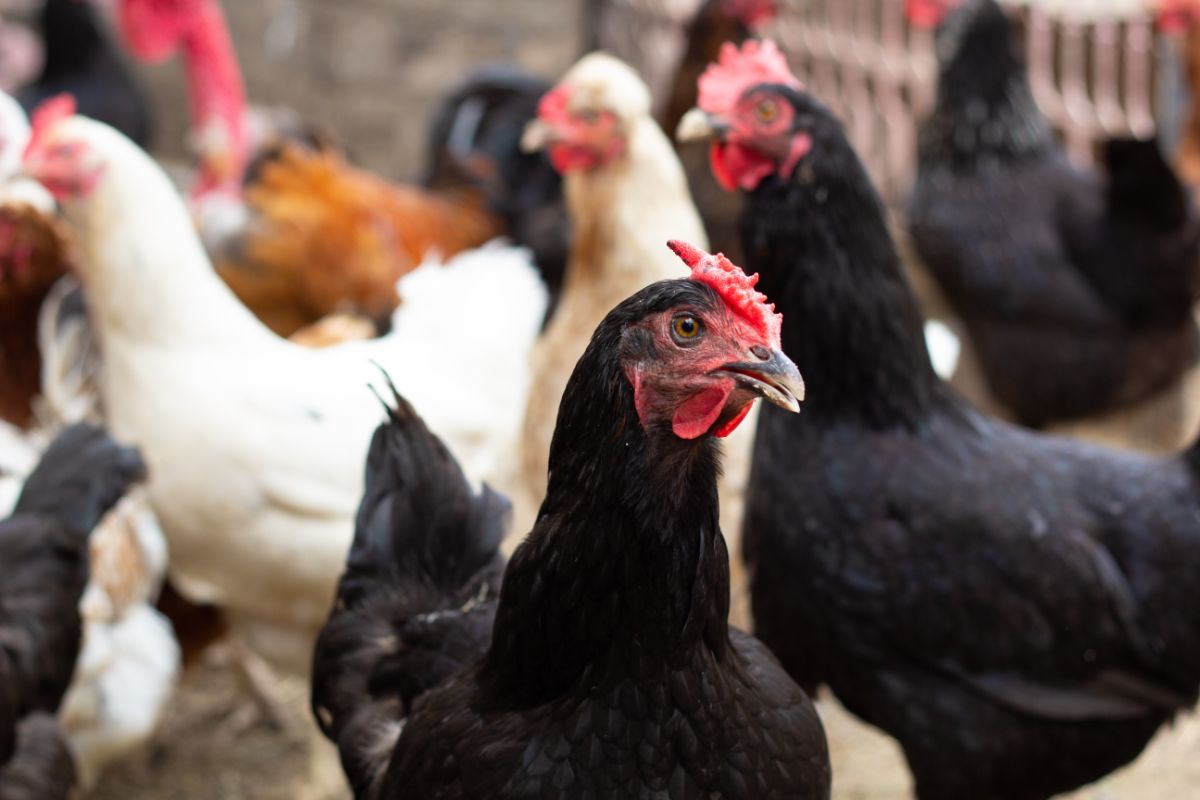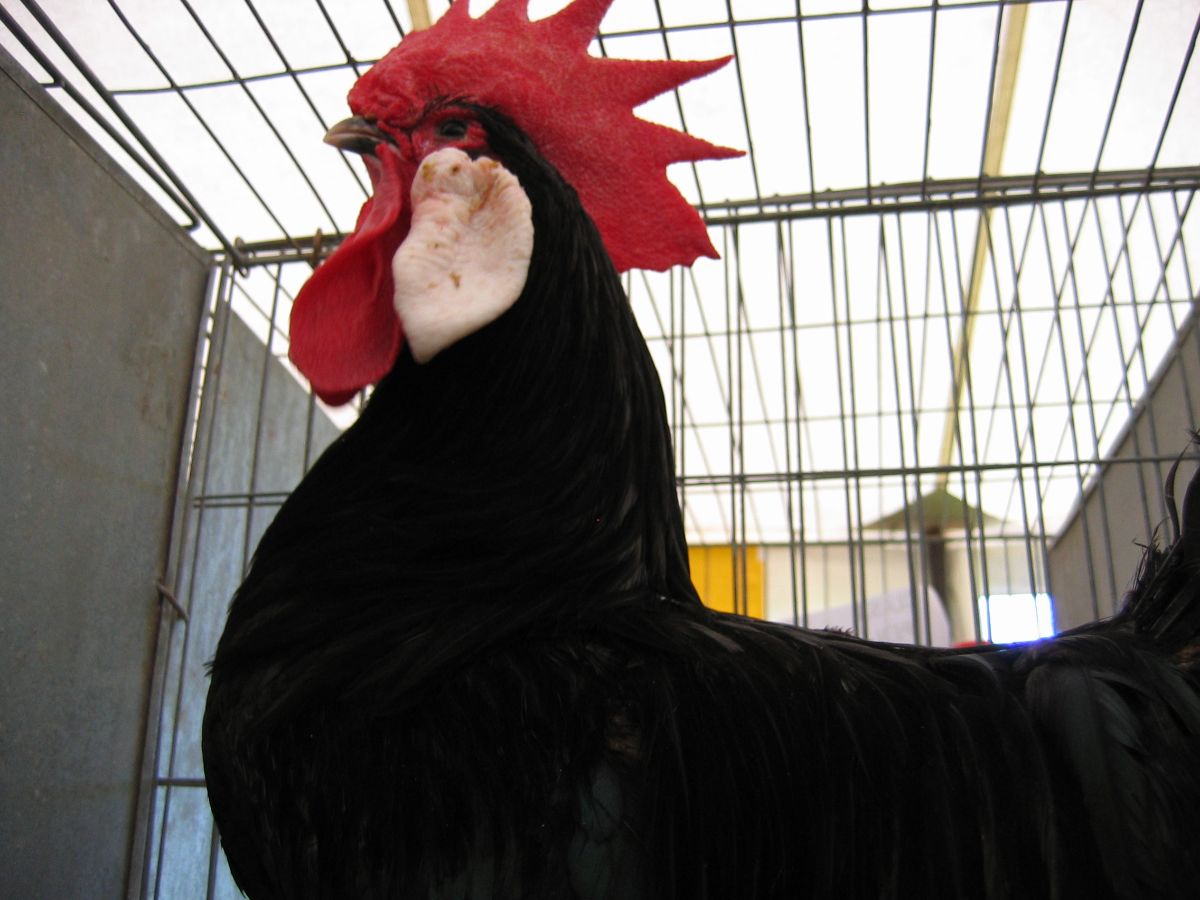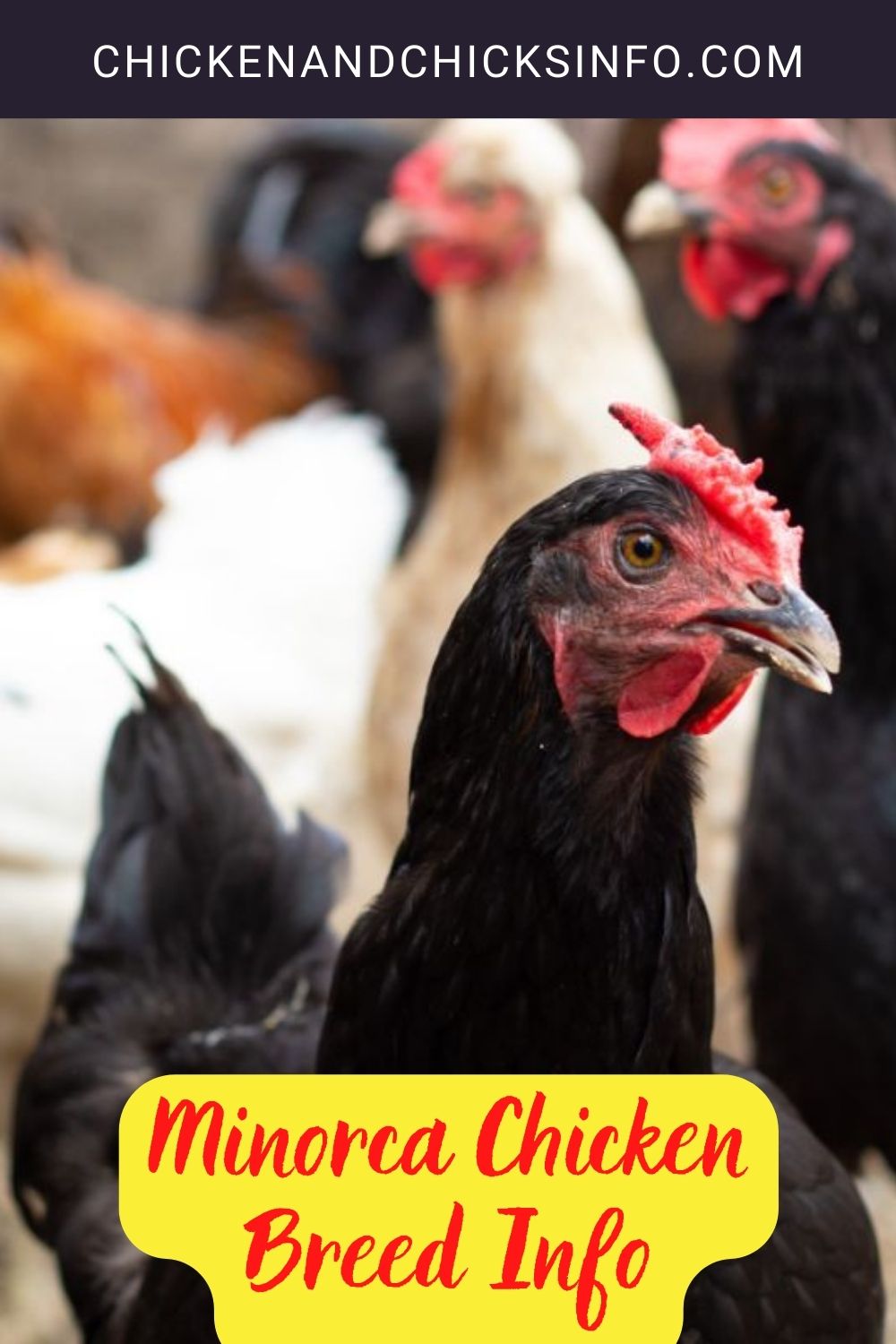The Minorca is the biggest, heaviest breed of Mediterranean chickens. They are primarily used for egg laying as their meat is dry and of poor quality. These hens produce the largest white eggs of any white egg-laying breed around.

Minorcas do well in confinement but thrive when allowed to roam free range. The hens rarely set, which is good news if you plan on collecting eggs rather than hatching chicks.
Jump to:

Minorca Chicken Breed Quick Info
Minorca Chicken Description
| Minorca Type/Size: | Standard |
| Feather Color: | Black |
| Leg Type: | Clean |
| Leg Color: | Slate |
| Skin Color: | White |
| Minorca Ease of Raising/Keeping: | Medium |
| Minorca Special Care Needs: | Yes |
| Is the Minorca breed a common, rare, or protected breed of chicken? | Rare, “threatened” status |
Minorca Use
| Meat | Yes |
| Eggs | Yes |
| Dual Purpose | No |
| Minorca Temperament: | Active, feisty |
| Minorca Ability/Likelihood to Free Range: | Yes |
Minorca Egg Production
| Egg Color | White |
| Egg Size | X-Large |
| Estimated Number of Eggs Per Year | 140-220 |
| Likeliness to Brood Eggs/Raise Chicks | Low |
Minorca Meat Production
| Dressed Weight Male | N/A |
| Dressed Weight Female | N/A |
Minorca Climate Tolerance
| Heat | Excellent |
| Cold | Moderate |
Minorca Age to Maturity
| Number of Months to Reach Full Size | 20 Weeks |
| Number of Months to Start Egg Laying | 20 Weeks |
| Number of Weeks/Months to Reach Meat Harvest Size | N/A |
Minorca Size at Maturity
| Male | 9 lbs. |
| Female | 7 ½ lbs. |
Origins of the Minorca Chicken

The origin of this breed is unknown, although there are a few guesses as to where they originated from. They may have been exported from Africa to Spain by the Moors. Another theory is that they were brought from Italy to Spain by the Romans.
Either way, they ended up on the small island of Minorca off the coast of Spain in the Mediterranean Sea, which they are named after. From there, they were exported to England in 1834 and later to the United States in 1884.
Some Things to Know About the Minorca Chicken

This Mediterranean breed is characterized by a long, broad, heavily-muscled frame. Despite their large size and strong thighs, they do not excel as meat birds due to the poor quality of their meat.
Minorcas have large red single combs, though there are rose comb varieties available too. Their broad frame, long wattles, and oversized combs give them an imposing appearance.
Their plumage is black, but they boast large white earlobes. Their legs are a slate color, and their skin is white. Their feathering is tight-knit and ends in a long, full tail.
How Easy is it to Keep Minorca Chickens?

The Minorca is generally easy to care for but is best for those with previous experience caring for chickens. While they are not aggressive, they are also not known to be particularly cuddly or friendly when it comes to being around people. Owners have described their personalities as feisty.
They can be flighty and may fly if they feel the need to. However, they do prefer to be in the open foraging, so a free-range setup is best for them. Just make sure that your fences and boundaries are tall enough so they won’t be able to fly over them.
Special Care and Considerations for Minorca Chickens
In general, the Minorca chicken is hardy and has no major health concerns. They are skilled at evading predators, which makes them ideal for free-ranging operations.
Because of their Mediterranean heritage, these birds do best in warmer climates. Their compact feathering and large combs make them prone to frostbite. If you live in an area where temperatures drop in the winter, this may not be the breed for you.





